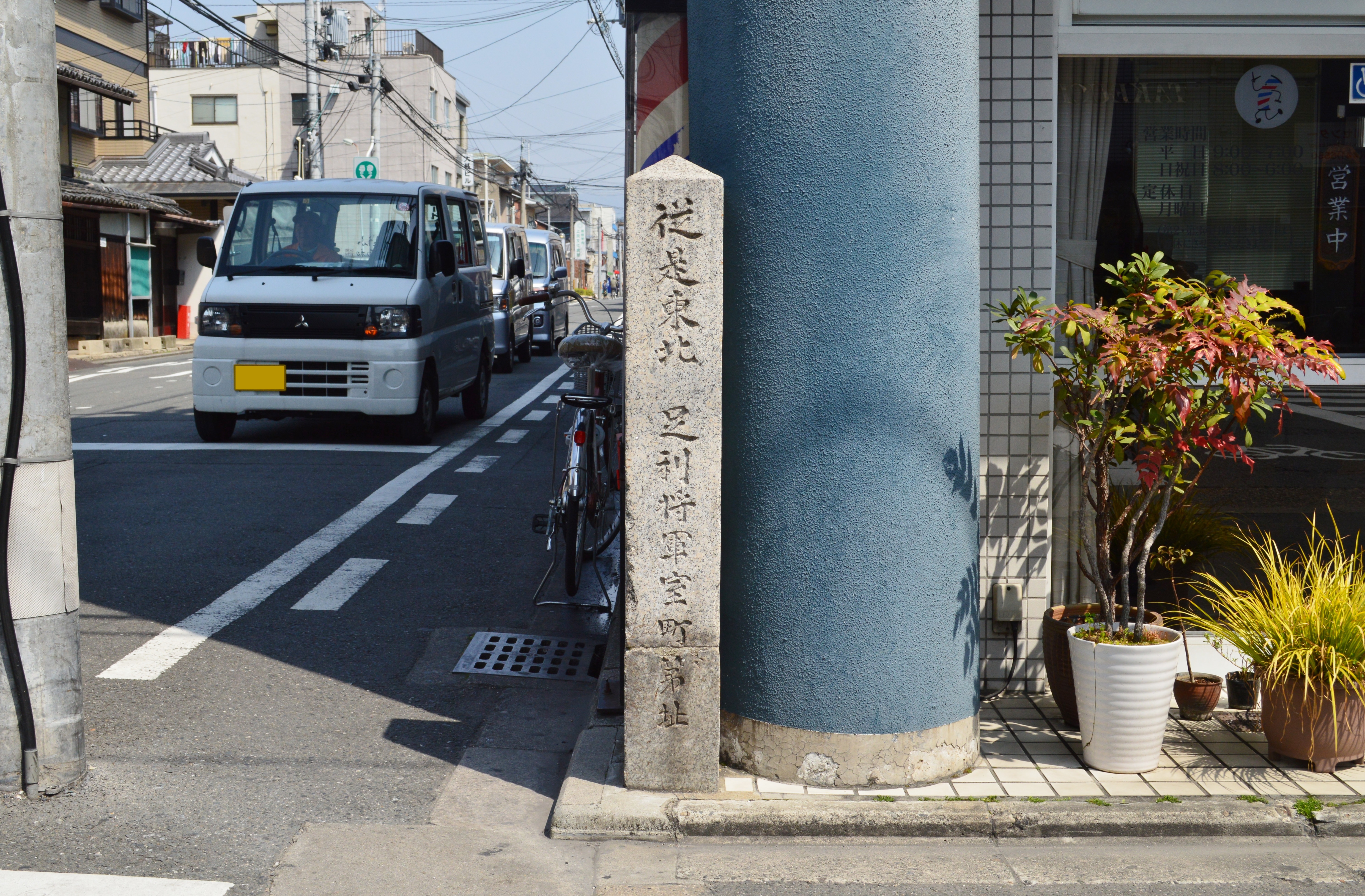Hana-no Gosho on:
[Wikipedia]
[Google]
[Amazon]
 is a street in
is a street in 
 In 1378, near where Imadegawa Street now intersects Muromachi Street (),Specifically, at the block now bounded by Karasuma Street, Imadegawa Street and Kamitachiuri Street. the third ''
In 1378, near where Imadegawa Street now intersects Muromachi Street (),Specifically, at the block now bounded by Karasuma Street, Imadegawa Street and Kamitachiuri Street. the third ''
 is a street in
is a street in Kyoto
Kyoto ( or ; Japanese language, Japanese: , ''KyŇćto'' ), officially , is the capital city of Kyoto Prefecture in the Kansai region of Japan's largest and most populous island of Honshu. , the city had a population of 1.46 million, making it t ...
, Japan
Japan is an island country in East Asia. Located in the Pacific Ocean off the northeast coast of the Asia, Asian mainland, it is bordered on the west by the Sea of Japan and extends from the Sea of Okhotsk in the north to the East China Sea ...
. Originally a path called in Heian-kyŇć
Heian-kyŇć was one of several former names for the city now known as Kyoto. It was the official capital of Japan for over one thousand years, from 794 to 1868 with an interruption in 1180.
Emperor Kanmu established it as the capital in 794, mo ...
, the ancient capital that preceded Kyoto, it lies to the west of and runs north-south from in Kita-ku to in Minami-ku. En route, it is blocked by Higashi Hongan-ji Temple and Kyoto Station
Kyoto ( or ; Japanese language, Japanese: , ''KyŇćto'' ), officially , is the capital city of Kyoto Prefecture in the Kansai region of Japan's largest and most populous island of Honshu. , the city had a population of 1.46 million, making it t ...
.

 In 1378, near where Imadegawa Street now intersects Muromachi Street (),Specifically, at the block now bounded by Karasuma Street, Imadegawa Street and Kamitachiuri Street. the third ''
In 1378, near where Imadegawa Street now intersects Muromachi Street (),Specifically, at the block now bounded by Karasuma Street, Imadegawa Street and Kamitachiuri Street. the third ''shŇćgun
, officially , was the title of the military rulers of Japan during most of the period spanning from 1185 to 1868. Nominally appointed by the Emperor, shoguns were usually the de facto rulers of the country, except during parts of the Kamak ...
'' Ashikaga Yoshimitsu
was the third '' shŇćgun'' of the Ashikaga shogunate, ruling from 1368 to 1394 during the Muromachi period of Japan. Yoshimitsu was Ashikaga Yoshiakira's third son but the oldest son to survive, his childhood name being HaruŇć (). Yoshimitsu ...
established the , a luxurious palace that became the political and cultural center of the country. Today, its location is commemorated by a stone marker in what was its southwestern corner and relics from excavations in the area are held in the of DŇćshisha University. The Ashikaga (Muromachi) shogunate prospered until the ŇĆnin War
The , also known as the Upheaval of ŇĆnin and ŇĆnin-Bunmei war, was a civil war that lasted from 1467 to 1477, during the Muromachi period in Japan. ''ŇĆnin'' refers to the Japanese era name, Japanese era during which the war started; the war ende ...
(1467‚Äď1477), during which Kyoto disintegrated into the two areas KamigyŇć and ShimogyŇć. After the war, Muromachi Street was the only road between them.
During the Edo period
The , also known as the , is the period between 1600 or 1603 and 1868 in the history of Japan, when the country was under the rule of the Tokugawa shogunate and some 300 regional ''daimyo'', or feudal lords. Emerging from the chaos of the Sengok ...
, Muromachi Street saw the growth of kimono
The is a traditional Japanese garment and the national dress of Japan. The kimono is a wrapped-front garment with square sleeves and a rectangular body, and is worn Garment collars in hanfu#Youren (right lapel), left side wrapped over ri ...
wholesalers, some of which survive today. Each July, districts centered on the intersection between Muromachi Street and ShijŇć Street () in ShimogyŇć build floats () to parade during the Gion Matsuri
The is one of the largest and most famous festivals in Japan, taking place annually during the month of July in Kyoto. Many events take place in central Kyoto and at the Yasaka Shrine, the festival's patron shrine, located in Kyoto's famous Gio ...
festival.
Establishments
See also
* :ja:šļ¨ťÉĹŚłāŚÜÖ„ĀģťÄö„āäNotes
{{reflist, group="n" Streets in Kyoto